Liked how SquareWear 2.0 has so many built-in components and yet so compact in size? Introducing SquareWear Mini — the little sister of SquareWear that has the same capabilities (and more!) but is 25% smaler in size!
SquareWear Mini
Available for purchase at Rayshobby Shop.
So what is SquareWear Mini? Similar to SquareWear 2.0, the SquareWear Mini is essentially an Arduino running at 3.3V and 12MHz. It is based on the ATmega328 microcontroller, and it has a load of build-in components, including USB port, power switch, pushbutton, buzzer, temperature sensor, light sensor, MOSFETs, lithium battery jack, and lithium battery charger. The pins have enlarged sizes for sewing with conductive threads, for soldering sew-on snaps, and they are great for touch sensing too.
How did I shrink it to be smaller than the original SquareWear? Well, by removing the on-board rechargable coin battery and color LED, and routing some pins to the side. With the space saved, I was even able to add a 16KB I2C EEPROM for storing extra data. Shortly you will see how this is useful. These changes were made because SquareWear designed specially to be attached to a chainable color LED matrix. This will enable a whole new set of exciting projects, as you can see from the video above.
Color LED Matrix
So let me briefly explain the LED matrix. Each matrix contains 35 LEDs arranged on a 5×7 grid with 8mm spacing. It uses the WS2812B color LEDs. These are great because the LED has a built-in chip that allows you to daisey chain them in bulk and still be able to individually set the color of any LED with only one microcontorller pin. Adafruit gave them a name calle the Neopixels. No matter how many LEDs you have, you only need 3 pins to get them to work, namely the VCC, GND, and DATA_IN pins.
These pins are mapped out at the back of the LED matrix. The locations of these pins exactly match the VCC, GND, and digital D10 pins on SquareWear Mini, so you can easily attach SquareWear Mini with the LED matrix by either soldering some sew-on snaps, or directly soldering the two boards together.
The resolution 5×7 is not a whole lot, but it is sufficient to display ASCII characters and a lot of cute icons:
The LED matrix is designed to be chainable too. Each board has DATAIND pins on one side, and DATAOUT on the other side. To extend the number of boards in the X direction, just place two matrices side by side and solder across the 6 pins on the boundary. The solder will get the two boards firmly attached to each other. Chain several boards together to make a large display panel, and it’s great for showing text and messages in any color you want. For example, you can use it as a name tag, or a thermometer (remember, SquareWear Mini has a built-in temperature sensor!)
You can also extend the panel in the Y direction. To do so, use three wires to connect the VCC, GND, and DATA_OUT pins of the previous row to the VCC, GND, DATA_IN pins of the next row. Also solder across the pins on the vertical direction to firmly attach the two rows of boards together. There you go, a bigger panel to display more detailed graphics!
Software Demos
We’ve re-worked the SquareWear software library to include LED matrix demos. These demos work on both the original SquareWear 2.0 and SquareWear Mini. Check the video above for selected examples. The demos are included in the pre-configured software package, and are also available for downloaded individually at the SquareWear Github repository.
What I want to highlight here is the Flipbook Animation demo. It’s a great demo that allows you to interactively design pixel patterns and even an animation. SquareWear Mini can store the frame data into the I2C EEPROM and play it back later. Even better, it comes with sounds too! So how does this work? First, you upload the Flipbook Arduino code to SquareWear. Then, run the Flipbook host software. The host software is written in Processing and is cross-platform. It uses the HID Serial interface to communicate with SquareWear. In the host software you can click on pixels and assign them color values. These values are immediately transferred to SquareWear so you can preview the frame in real-time. For each frame you can specify the frame time and optionally a music note to play. You can create multiple frames, navigate through each frame, make modifications, save the animation to a disk file etc. At last, when you are satisfied with it, click on ‘Transfer to Device’ and the data will be stored into EEPROM. Next time you turn on SquareWear, just click the pushbutton and it will play back the stored animation. Isn’t that cool? With this tool, you never have to think about converting pixel patterns to programming code any more. Let your creativity and imagination take over!
Hope you like SquareWear Mini, and let us know your cool project ideas!
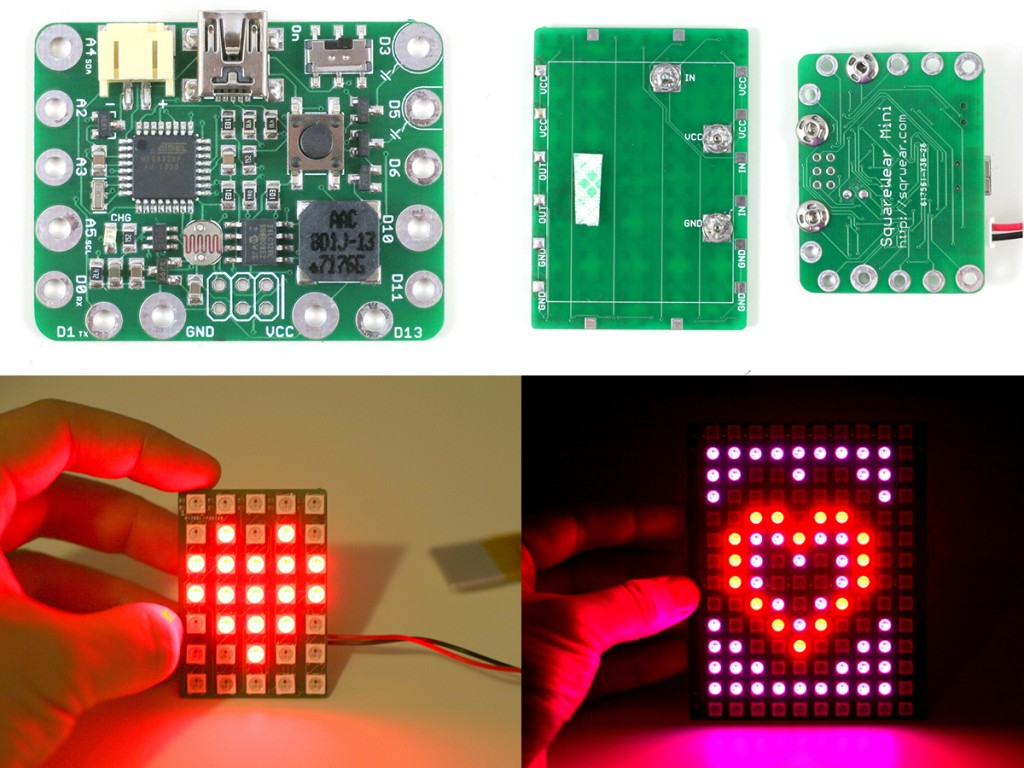
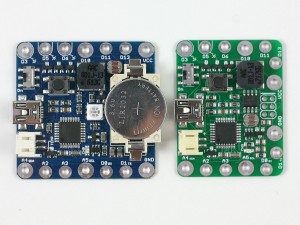
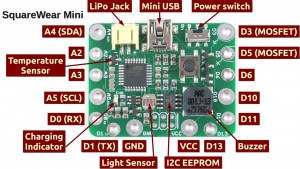
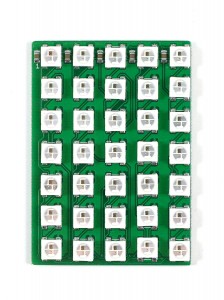
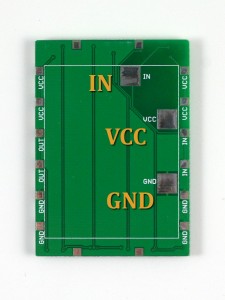
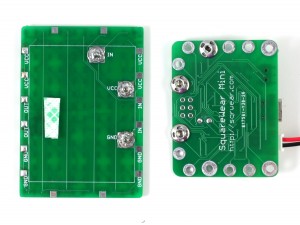
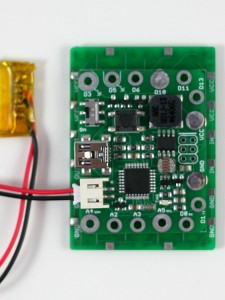
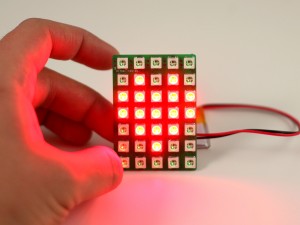
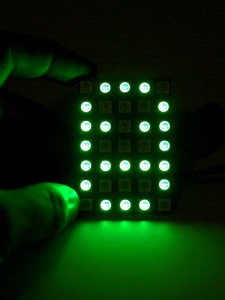
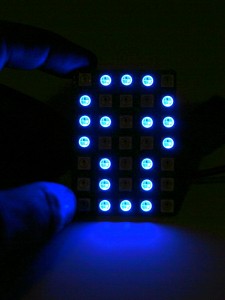
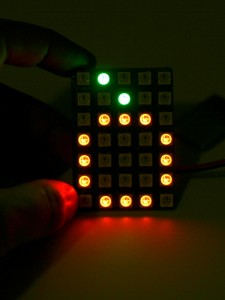
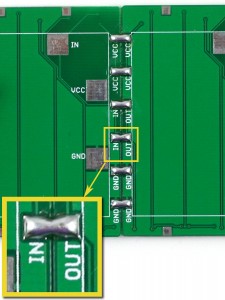
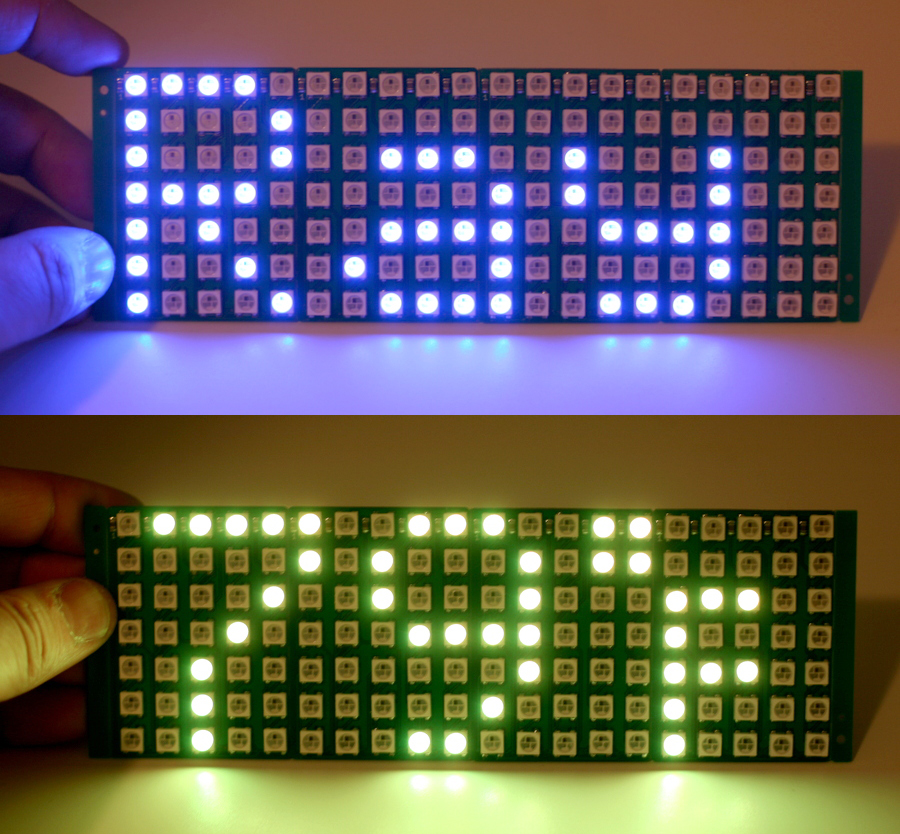
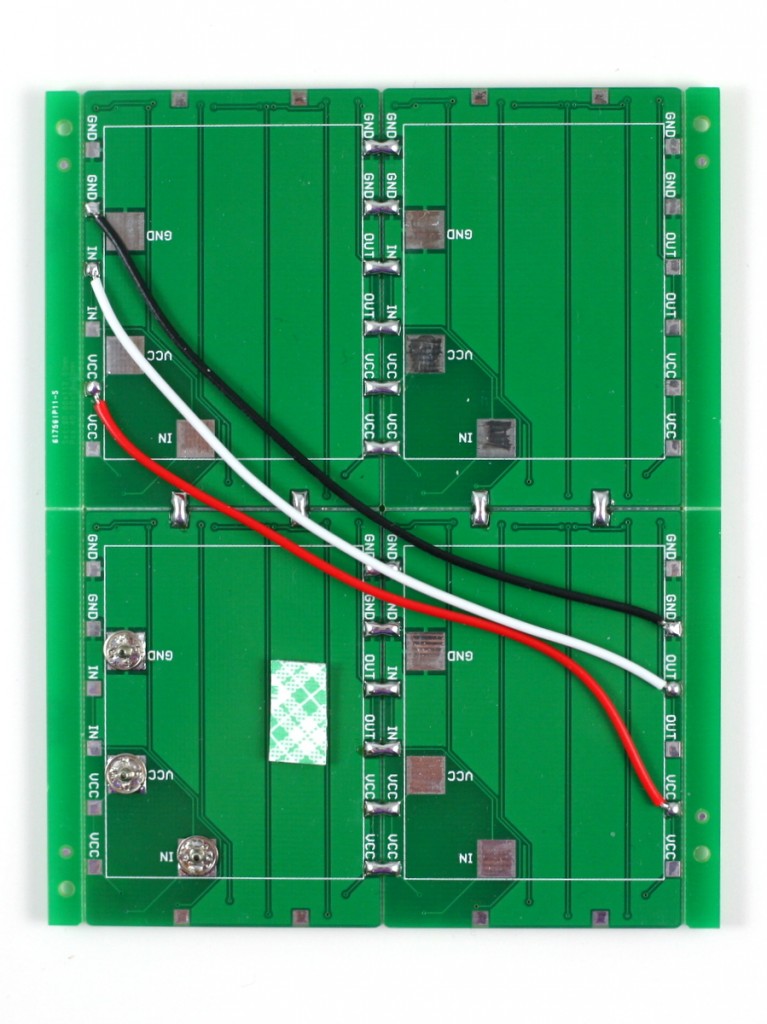

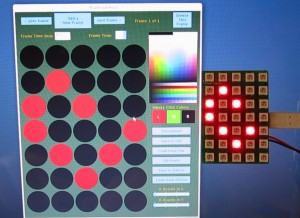
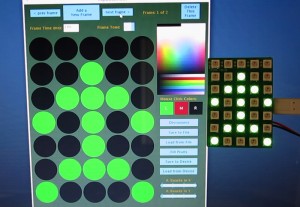

Hi Ray,
How do you handle power on the SquareWear Mini? I’m also doing a project with an Arduino type board and a lot of WS2812B pixels and battery power is my biggest concern. With 120 LEDs, I predict my typical draw is going to be around 2.4A. What LiPo pack are you using? How much runtime are you getting from a single charge when you’ve got several of the matrix boards daisy chained?
g.
Hi Grant, I am not doing anything particular to handle power draw. I am well aware of the current consumption of WS2812B, that’s why the software uses a low brightness (0.1 to 0.25) to lower the current draw. Ideally the brightness should be set inversely proportional to the number of LED matrix boards. So the more LEDs you have, the dimmer each individual LED will look. SquareWear has an LDO that can only supply up to 350mA current. If the LEDs draw more than that, the LDO’s internal thermo protection will just shut it down. If the LEDs don’t turn on at the same time, you can suitably increase the brightness; however, if you expect all LEDs to turn on at the same time, then you have to lower the brightness.
Ah, I see. I had assumed you were driving directly from the LiPo pack as I saw suggested on Adafruits Neopixel power guide[1]. With running it through an LDO, what voltage are you able to supply the pixels?
[1] http://learn.adafruit.com/adafruit-neopixel-uberguide/power
I am using the 3.3V from VCC to power the pixels. This is already quite bright. Powering the LEDs directly from battery has the advantage that it doesn’t limit the current draw. I did consider that option but decided not to adopt it for two reasons: 1) SquareWear currently does not have a pinout for the battery pin, it only has a pinout for VCC; 2) the higher the voltage, the more current the pixels draw; also, the brightness can vary depending on voltage, and I prefer using regulated voltage to provide consistent brightness. Another concern is that in case the pixels are shorted and the battery has no internal protection, the LDO can provide some level of protection; otherwise the battery might discharge instantly and that’s not good.
Interesting. I didn’t think the WS2812b could be driven from 3.3V. I need to try that. Using 3.3V would simplify my design a bit since I’m using a number of 3.3V i2c sensors.
Right now my prototype is using a separate 5V/3A switching regulator module which lets me run the pixels at full brightness.
Good question. There is some research on powering WS2812 at 3.3V here:
http://jason-webb.info/2014/02/lumiboard-rev-b-prototypes-and-testing-board-updates-firmware-led-testing-and-bluetooth/
and as you can see it does look dimmer than 5V but other than that it works perfectly fine.
Does the lipo recharche through the USB ?
Yes it does.
Nice looking boards. Who fabricates the PCBs and who does assembly/reflow?
We have a local production pipeline and these are assembled locally in Massachusetts. PCBs are made by a Chinese company http://www.sz-jlc.com.
Ray;
Great project. I’ll be aiming to get a board and some LED displays soon to play around with a project for a project I have in mind. Really great that you have taken the time to make this for us all. Many thanks
Andrew
Ray, where can we find the Flipbook host software? That’s so good!
It’s available in the SquareWear software package. You can also download it directly from Github:
https://github.com/rayshobby/squarewear/archive/master.zip
it’s in folder software / v2.0 / flipbookHost